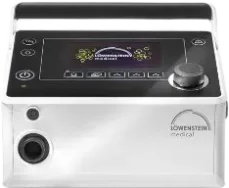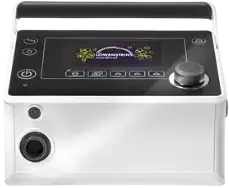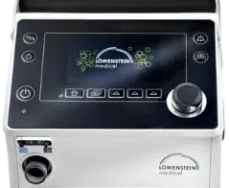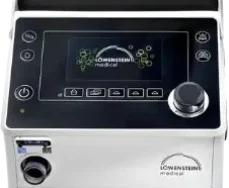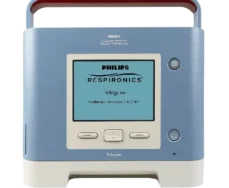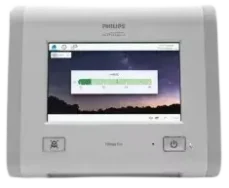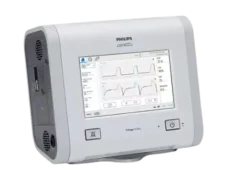What is a Home Ventilator?
It is a medical device that provides continuous mechanical ventilation for patients who struggle to breathe on their own. Unlike CPAP or BiPAP machines that treat sleep apnea and a mild to moderate breathing disorders, ventilators deliver 24/7 life-sustaining respiratory support for individuals with severe or chronic lung and neuromuscular conditions.
How Does Home Ventilators Work?
It works by pushing controlled amounts of air or a mixture of oxygen and air into the lungs. Depending on the settings prescribed by a physician, the device can:
- Deliver a set volume of air (volume control)
- Provide a set pressure of air (pressure control)
- Adjust between different modes depending on patient needs.
Modern home ventilators are equipped with alarms, sensors, and monitoring systems that ensures safe and effective therapy at all times.
Educational Video
🙏 Thank you for watching!
We hope it was easy to understand Home Ventilators.
Better Breathe... Sound Sleep!
📚 Explore Other Therapy Devices
Who Needs a Home Ventilators?
Doctors may prescribe a ventilator for patients with:
- Chronic Obstructive Pulmonary Disease (COPD)
- Neuromuscular disorders (ALS, muscular dystrophy, etc.)
- Severe restrictive lung disease
- Spinal cord injuries affecting breathing muscles
- Long-term dependency on assisted breathing
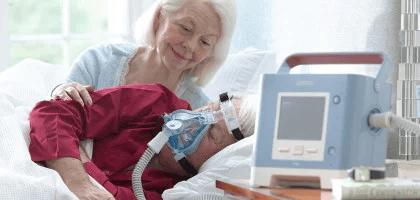

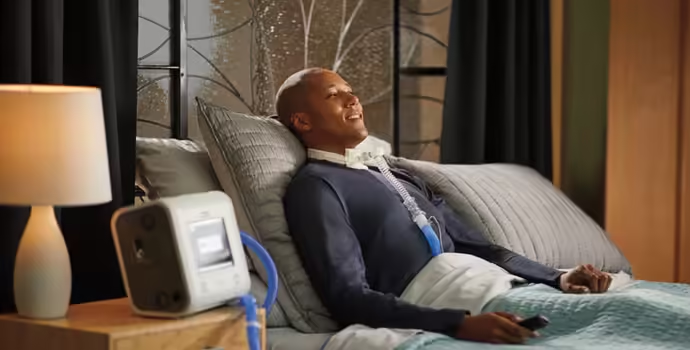
Benefits of Mechanical Ventilation:
- 24/7 Respiratory Support: Ensures continuous breathing assistance
- Improved Oxygen Levels: Helps maintain stable blood oxygen and carbon dioxide levels
- Customizable Therapy: Multiple modes to suit individual patient needs
- Enhanced Quality of Life: Patients can manage therapy at home instead of long hospital stays
- Built-in Safety Features: Alarms and monitoring safeguard against risks
Ventilators vs AVAPS:
While both ventilators and AVAPS (Average Volume Assured Pressure Support) assist in breathing, they serve different purpose:
Feature | Home Ventilator | AVAPS |
Usage | Continuous respiratory support (day & night) | Nighttime or intermittent support |
Patient Type | Severe/chronic respiratory failure | Patients with hypoventilation or neuromuscular weakness |
Modes | Multiple (volume/pressure control, backup modes) | Primarily pressure support with volume targeting |
Dependence | For patients who cannot breathe adequate without assistance | For patients who can breathe but need support maintaining volume |
In short: Ventilators are more advanced and for critical long-term support, while AVAPS is a specialized BiPAP mode for less severe conditions.
Tips for Usage & Maintenance
Usage:
- Always follow your doctor’s prescription and settings
- Ensure secure mask/tracheostomy connection
- Keep a backup power source read in case of outages
- Monitor comfort and promptl report issues to your healthcare provider
Maintenance:
- Daily: Clean mask and tubing
- Weekly: Replace or wash air filters
- Monthly: Inspect device alarms, cables, and power connections
- Regularly: Schedule servicing and follow-ups with your doctor
Frequently Asked Questions (FAQs)
Can I use a ventilator without medical supervision?
No. Ventilators must always be prescribed and monitored by healthcare professionals.
Is a ventilator portable?
Yes, many home models are compact and portable, but suitability depends on your health condition.
How is a ventilator different from CPAP/BiPAP?
CPAP and BiPAP are mainly for sleep apnea and mild breathing disorders, while ventilators are for the patients who need full-time breathing support.
Do Ventilators have safety features?
Yes, most include alarms for disconnections, pressure issues, or power failures.
How often should I replace filters and tubing?
Filters usually every 2 – 4 weeks, tubing every 1 – 3 months, or as per manufacturer guidelines.
What’s the difference between invasive and non-invasive ventilators?
Invasive requires a tube into the airway, while non-invasive uses a mask.
Can ventilators be used at home?
Yes, portable home ventilators are available for long-term care under medical guidance.
How long can a patient stay on a ventilator?
It depends on their condition – some need it short-term, while others require long-term support.

